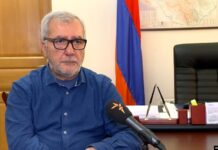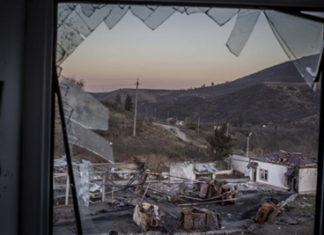By Matthew DeLong
As a third generation Armenian-American boy growing up in a southern sunny suburban community nestled within the golden hills of San Jose, Calif., extended family get-togethers around holidays always revolved around retellings of the stories of our ancestors, debating which famous celebrities were suspected of being Armenian, and discussion about school and what the children were learning and what we hoped to become. There was pride in our collective persistence to succeed — a mentality of perseverance in the face of struggle I attribute to my great grandparents, the Armenian immigrants, who had found a new home in Fresno.
Yet somewhere between the stories, our insistence on family gatherings around the holidays, and the indulging in shish-kebab, tolma, kufta, pilaf and other Armenian dishes, the actual place “Armenia” and its people took on almost mythical proportions. In school, I had never met any other Armenian children. My parents didn’t know any other Armenians from the neighborhood — in fact, I’m not sure we knew any other Armenians except those in our extended family. Even as a young child, I remember asking my mother where Armenia was, to which she replied “oh, honey, it’s not a country anymore.”
Even in the second grade, explaining where my ancestors came from for a class project wasn’t as simple for me as other children who could mention immediately recognizable names like Ireland, Germany, or China. I’m sure to many of them it sounded as if the very name were the work of fiction, either made-up or too insignificant to even consider. Looking back on it, it wasn’t too far off from how I thought about it as a child.
It wasn’t until my time in Germany, at the age of 27, that I was able to get to know and befriend other Armenians. Getting to know them felt in some cases like trying to solving this giant puzzle of who my ancestors were while also trying to form a closer bond with the country, its people and the culture itself. I felt that, if I could get to know them, I would understand better where my ancestors came from, and would thus be able to better understand myself.
A few years later, when I was studying at the Humboldt University in Berlin and working as an intern at the Mesrop Center with Prof. Armenuhi Drost-Abgarjan, I applied to a DAAD-sponsored summer school program taking place in Yerevan. The Deutscher Akademischer Austauschdienst (German Academic Exchange Service) is a government supported organization that promotes international exchange for students and researchers (www.daad.org/en). For two weeks, there would be lectures with other students who had an interest in Armenia on topics ranging from the language, genealogy, literature, history, politics to post-Soviet Armenian geopolitics. Excursions to many of its oldest and prominent monasteries were planned, as well as to Areni, the world’s oldest-known winemaking region. And in addition, each participant would stay with a host family to practice the language and have the chance to get to know Armenians. It would be a great two weeks to get better acquainted with the country, its culture, history, language and above all — its people.









